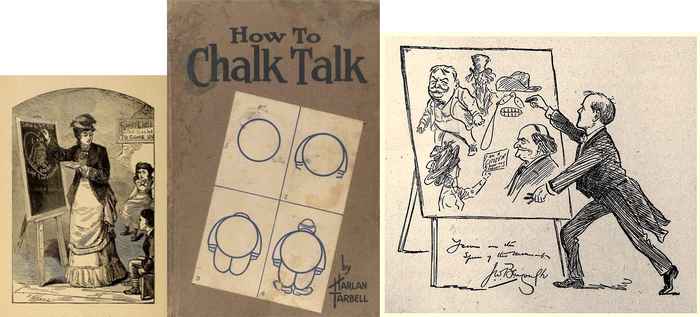Chalk Talking and an American Sequential Art
- Date
- 27 February 2025
- Time
- 15:00 -17:00

Sign up: https://forms.office.com/e/sG9aySv3iE
This session aims to offer new perspectives on the emergence of comic strips in North America by reframing Rodolphe Töpffer’s somewhat exaggerated paternity in the birth of sequential art outside of Europe. Sourcing our study from 19th-century humour publications and the proliferation of rebus and other visual riddles in US Magazines, we will see different sequential and live drawing practices. One of them was a cradle for future cartoonists and was most commonly known at the time as chalk talking, a tradition deeply rooted in a much-needed pedagogical Americanism that emerged during the post-Civil War Reconstruction era. But what is chalk talking about? How does it prepare the close reading demanded by comic strip reading, and in what way does it inform us of multiple and parallel histories of the birth of a medium?
Readings:
Gardner, Jared. “Fragments of Modernity, 1889–1920.” Projections: Comics and the History of Twenty-First-Century Storytelling. Stanford: Stanford University Press, 2012. 1-28
Goody, Jack. “Language and Writing.” The Interface between the Written and the Oral. Studies in Literacy, Family, Culture, and the State. Cambridge [Cambridgeshire] ; New York: Cambridge University Press, 1987. 258-289.
Jared Gardner’s first chapter of Projections will serve as a clear and enlightening bridge between 19th-century politics of vision and technological momentum and the modern historiography of comic strips. Jack Goody’s last chapter of his analysis of the written and oral interfaces between artists and the public will give us the tools to go through some chalk talking exercises to think and discuss how this practice finds agency in the gesture of creating comics. You can access the readings through this link. https://amsuni-my.sharepoint.com/:f:/g/personal/t_pape_uva_nl/EsPGzrwSEhxMovw0Bvk3OqoBAq5IIu3c-kLAAwOogaFN5Q?e=eX0kQ4
The next two dates are Thursday, March 13, and Friday, May 9.